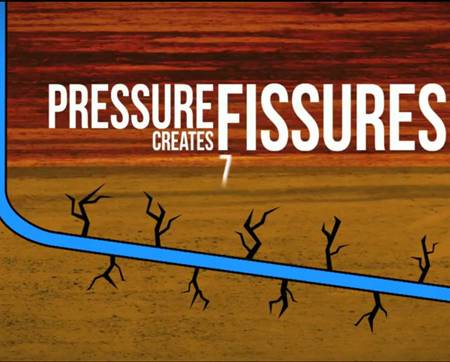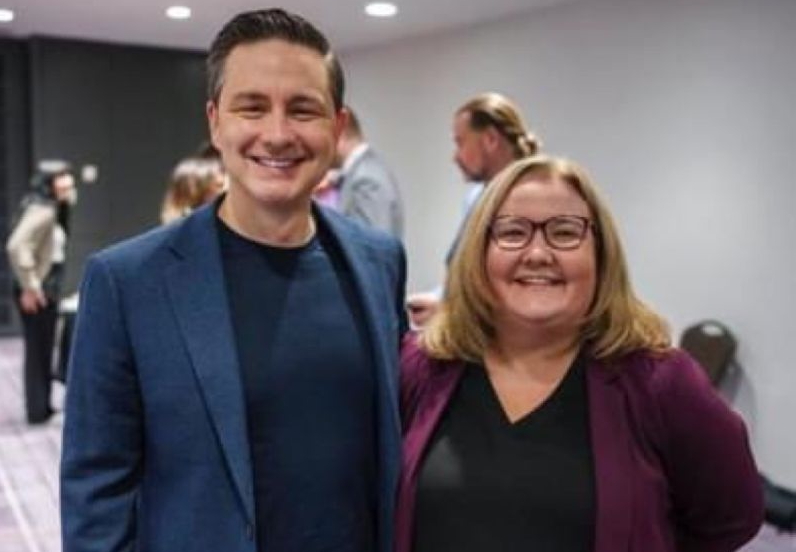The oil and gas industry has a long history of resisting public accountability and protective standards, and generally avoiding tough questions about its practices and attacking its critics. Just yesterday, Robert F. Kennedy, Jr. wrote a piece in the Huffington Post titled, “The Fracking Industry’s War On The New York Times – And The Truth,” about this evasive behavior in the context of the industry’s current embrace of fracked unconventional gas and the many questions about the safety of fracking.
Kennedy (full disclosure – Bobby is my former boss and a good friend) applauded New York Times’ reporter Ian Urbina for his investigative efforts in his latest installment titled, “Rush to Drill for Natural Gas Creates Conflicts With Mortgages,” part of the NY Times extensive and ongoing “Drilling Down” series on the numerous perils associated with the rush to drill for gas.
A short recap on what that story found: People have signed over a million oil and gas leases in the past decade, but the leases sometimes let gas companies use their land in environmentally risky ways. Banks are not paying attention and often don’t know about these leases, so they pass along mortgages to investors that carry undisclosed risks, which is analogous to the way that the sub-prime mortgage disaster unfolded. The conflicts between the leases and the mortgage rules are clear, verified and wide-reaching.
Infamous ‘Energy in Depth’ Front Group Goes on the Attack
As if on cue, the oil and gas industry demonstrated Kennedy’s point, almost instantaneously attacking Urbina, yet again.
The fracked gas industry’s chief apologists – Energy in Depth (EID)** – which I previously revealed as a front group launched by some of the largest oil companies on the planet (despite its claims to “mom-n-pop” roots), posted a blog titled, “Lenders’ Bagels?,” desperately attempting to divert attention away from legitimate and serious questions raised by Urbina’s New York Times story about the way that oil and gas leases impact mortgages.
The EID piece is noteworthy for a couple reasons: It entirely ducks the very real conflicts that the New York Times highlighted, and it is riddled with factual inaccuracies.
Let’s review some of them:
-
EID Rhetoric: “Obviously, if lenders actually had legitimate concerns with respect to oil and gas leases, the Times would have been able to find lots of banks, brokers and real estate agents to talk to – and maybe even a few outside of Tompkins County, N.Y.” (EID’s insinuation here is that the conflicts are limited to a small county in New York, rather than national in scope).
-
The Facts: The Times’ story and the document reader are actually full of non-Ithaca sources verifying these problems, including the research arm of Congress, a Harvard law professor, a real estate broker from PA, two of the nation’s foremost mortgage experts, one from Los Angeles and the other from Philadelphia, an email from a mortgage banker at Wells Fargo (a national bank), several members of Congress, including one from Massachusetts, have written letters to Fannie Mae and Freddie Mac about these issues. And just yesterday, the Attorney General of Maryland sent out a consumer alert statewide in response to the Times story. The alert says: “Marylanders need to protect themselves from unintentionally putting their homes and farms at risk. If a mineral rights lease is on the table, take it to your bank or mortgage lender first and have them sign off on it.” The Attorney General also announced that they plan to release their own publication on the topic in coming weeks. That hardly sounds like a problem that is limited to a county in upstate New York.
-
EID Rhetoric: “Unfortunately for the Times, without the specter of pits, impoundments and ‘Olympic-size’ pools of ‘toxic wastewater’ to hang its hat on, the paper’s story pretty much disintegrates upon contact. Which is probably why you won’t find the words “closed loop” anywhere in the piece. (EID here again casts the issues narrowly in an effort to avoid conceding that the conflicts that lenders are starting to identify between mortgages and leases are far broader than just open-faced impoundments.)
-
The Facts: The bigger point to keep in mind and that the Times makes pretty clear is that mortgage terms don’t distinguish between waste in a pit or in a “closed-loop” tank. The mortgages say no storage of hazardous substances, period. So the distinction between pits and “closed-loop” systems is irrelevant to the issues. But even on EID’s narrow terms about open-faced impoundments, they are factually incorrect. The Times story does in fact touch on the issue of closed loop.
The story states,[Correction: This is not a quote from the story, it is from this supportive document]: “When a gas well is drilled and fracked, companies often build large impoundment pits. Many of these pits are designed to store millions of gallons of waste water, which can carry a variety of toxic or radioactive materials. … Sometimes the waste is stored in tanks rather than pits. Jim Gipson, a spokesman for Chesapeake Energy said that companies do not always dig pits to store wastewater when they drill. In northeastern Pennsylvania, which sits atop part of the Marcellus shale, all of Chesapeake Energy’s drilling rigs ‘use closed-loop systems comprised of steel tanks that serve as reserve pits for cuttings and drilling mud. Our only use of lined and fenced earthen pits is for fresh water storage.’ In other areas, Chesapeake uses pits during early stages of drilling. ‘In some western states, the initial phase of the of the well is drilled with water-based mud, and reserve pits are used for cuttings and mud per state regulations. Once a certain depth has been achieved (differs with each region depending on geology) the rig switches to a closed-loop system,’ he wrote in an October 7 e-mail. ‘We don’t use production pits,’ he emphasized.”
-
EID Rhetoric: “In the fourth paragraph, the reporter asserts that “[a]t least eight local or national banks do not typically issue mortgages on such properties, lenders say.” Which lenders say that? And which banks are they referring to? The reporter doesn’t say. Instead, he appears to pluck that little nugget from someone named Jennifer Canfield, a realtor and anti-shale activist from Damascus, Pa – a five minute drive from Josh Fox’s summer home in Milanville.”
-
The Facts: Take a look at The Times article. There’s a key hyperlink in the following sentence: “At least eight local or national banks do not typically issue mortgages on such properties, lenders say.” And it takes you directly to independent research by bankers themselves, not Jennifer Canfield, in the form of a report written by Greg May, vice president of residential lending at Tompkins Trust. That report lists the banks, including major nationwide lenders like Wells Fargo, GMAC and Bank of America.
-
EID Rhetoric: “For example, in the fifth paragraph of his story, Urbina reports on a “credit union in upstate New York” that has “started requiring gas companies to promise to pay for any damage caused by drilling.” In the next sentence, he cites “[a]nother” mortgage lender – presumably, a different one — that “will make home loans only to people who expressly agree not to sign a gas lease.” But take a look through the document-reader, and it sure looks like he’s talking about the same bank: Alternatives Federal Credit Union, based in — wait for it — Ithaca, N.Y.” The implication is that The Times has “multiplied sources” by making the actions of one bank look like the actions of multiple lenders.
- The Facts: It’s not the same bank. If you follow the links, and look through the document-reader, like EID claims they did, you see the first sentence refers to Visions Federal Credit Union, and the second to Alternatives Federal Credit Union. Try it: “A credit union in upstate New York has started requiring gas companies to promise to pay for any damage caused by drilling that may lead to devaluation of its mortgaged properties. Another will make home loans only to people who expressly agree not to sign a gas lease as long as they hold the mortgage.”
More importantly, its not just small credit unions that are concerned and taking measures to protect themselves. For example, see the national bank Wells Fargo describing its reluctance to lend on properties with gas leases and declining a particular mortgage.
EID touches on criticisms of prior coverage from the public editor. What they don’t touch on is the fact that the editors of the news room at The Times publicly responded to those criticisms, not once, but twice.
The irony here is two-fold. What the oil and gas industry did with this piece by EID is to show that Robert F. Kennedy Jr. is correct in his claim that the industry is more prone to obfuscating the truth than honestly reckoning with legitimate questions about real problems. EID also inadvertently revealed that the problems Urbina highlighted may in fact be far more widespread than even The Times realized.
The NYT piece discussed roughly one million gas leases signed over the past decade. But EID adds “Here’s a number that might surprise you: According to estimates from the National Association of Royalty Owners, nearly one out of every 35 people across the entire United States (8.5 million) has land under lease for oil and/or natural gas development.”
That’s an awful lot of leases on what is likely a lot of mortgaged properties – all the more reason that the real estate, banking and drilling industries – not to mention federal banking regulators – need to immediately investigate these conflicts. And soon.
**For more on Energy In Depth’s Big-Oil roots, see this section of DeSmogBlog’s Fracking The Future report.
Subscribe to our newsletter
Stay up to date with DeSmog news and alerts







